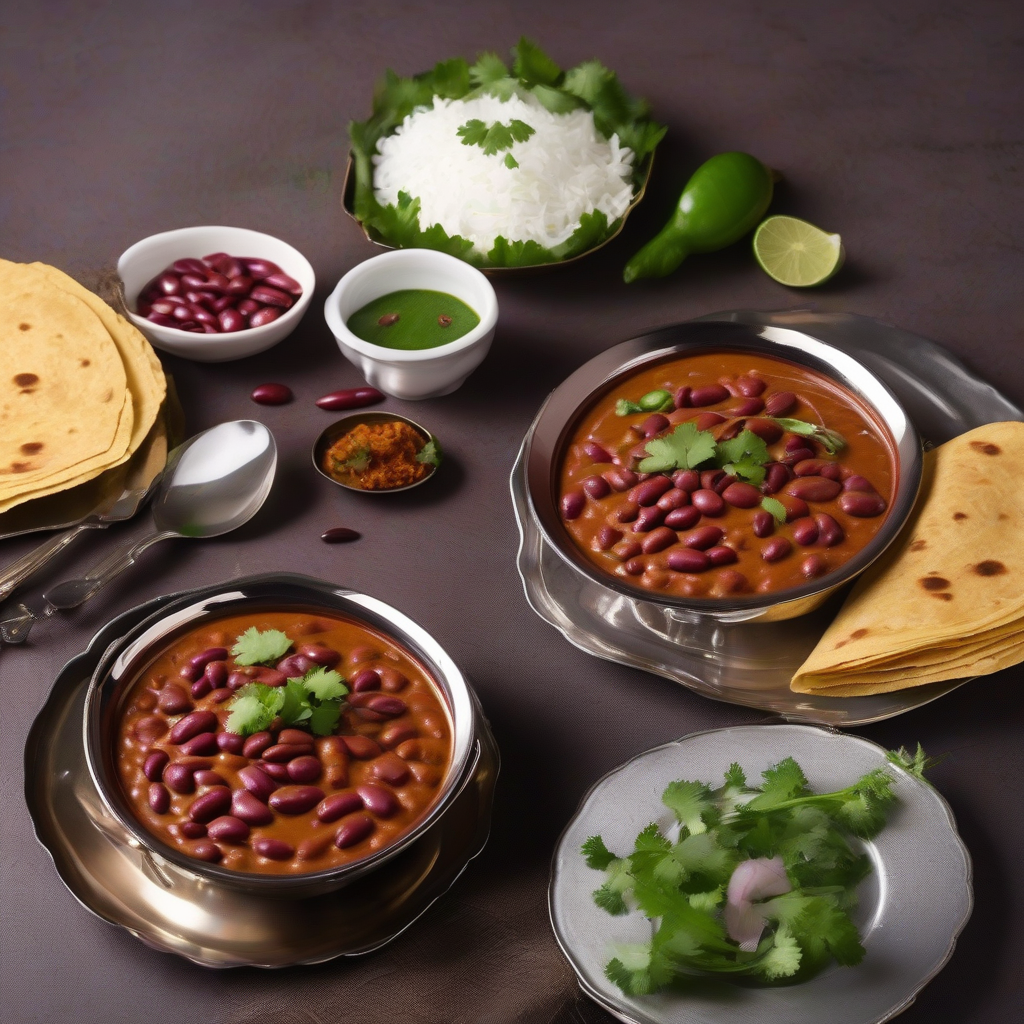Rajma Chawal: Dil Maange More! (The Heart Wants More!)
Namaste Dosto! And a big Sat Sri Akal to all my Punjabi pyaare (loved ones)! Chef Curry Do’pyaza here, back in your kitchens with a dish that’s as comforting as a warm hug on a chilly Delhi evening: Rajma!
This isn’t just food; it’s a feeling. It’s memories of maa ke haath ka khana (food made by mom’s hands), lazy afternoons, and the joyful chaos of family gatherings.
When Rajma Rules the Roost
Rajma is a superstar, especially during the monsoon season. The earthy, comforting flavors are just perfect for those rainy days. You’ll find it gracing tables during festive occasions like Lohri in Punjab, family poojas (prayers), and even casual get-togethers with friends. It’s a dish that brings people together.
A Little Rajma History, Just for Fun!
Now, you might think Rajma is as old as the Himalayas, but the truth is, it’s a relatively recent addition to the Indian culinary scene. Kidney beans, the star of Rajma, originally came from Central America. It was introduced to India, and the genius cooks of North India, particularly Punjab, adopted it and transformed it into the rich, flavorful curry we all adore. Talk about a delicious cultural exchange!
Let’s Get Cooking!
Preparation Time: 15 minutes (plus soaking time)
Cooking Time: 60-75 minutes
Ingredients:
- Rajma (Kidney Beans): 1 cup
- Pyaaz (Onion): 2 medium, finely chopped
- Tamatar (Tomatoes): 3 medium, finely chopped
- Adrak-Lahsun Paste (Ginger-Garlic Paste): 1 tablespoon
- Hari Mirch (Green Chillies): 2-3, finely chopped (adjust to your spice level!)
- Tel (Cooking Oil): 2 tablespoons
- Jeera (Cumin Seeds): 1 teaspoon
- Haldi Powder (Turmeric Powder): 1/2 teaspoon
- Lal Mirch Powder (Red Chilli Powder): 1 teaspoon (or more, if you’re feeling brave!)
- Dhania Powder (Coriander Powder): 2 teaspoons
- Garam Masala: 1/2 teaspoon
- Amchur Powder (Dry Mango Powder): 1/2 teaspoon (this adds a lovely tangy flavor!)
- Kasuri Methi (Dried Fenugreek Leaves): 1 teaspoon, crushed
- Hara Dhania (Fresh Coriander Leaves): For garnish, chopped
- Namak (Salt): To taste
- Water: As needed
Step-by-Step Rajma Magic:
- Soaking is Key: Wash the Rajma thoroughly. Soak it in plenty of water for at least 6-8 hours, or overnight. This is super important for even cooking and easier digestion.
- Pressure Cooker Power: Drain the soaked Rajma. Add it to a pressure cooker with fresh water (about 3 cups) and a pinch of salt. Cook for 5-6 whistles on medium heat. Let the pressure release naturally. If you don’t have a pressure cooker, you can boil the Rajma in a pot until it’s soft, but it will take longer.
- Masala Time! While the Rajma is cooking, heat oil in a kadai (wok) or a deep pan. Add Jeera. When it splutters, add the chopped Pyaaz. Fry until golden brown.
- Aromatic Explosion: Add Adrak-Lahsun paste and Hari Mirch. Sauté for a minute until the raw smell disappears.
- Tomato Tango: Add the chopped Tamatar and cook until they become soft and mushy.
- Spice it Up: Add Haldi Powder, Lal Mirch Powder, and Dhania Powder. Cook for another 2-3 minutes, stirring constantly, so the spices don’t burn. Add a splash of water if needed.
- Rajma Rendezvous: Gently mash a few of the cooked Rajma beans with the back of a spoon. This helps to thicken the gravy. Add the cooked Rajma to the kadai along with the water it was cooked in.
- Simmer Down: Bring the Rajma to a simmer. Add Garam Masala, Amchur Powder, and Kasuri Methi. Mix well.
- The Final Touch: Simmer for another 15-20 minutes, allowing the flavors to meld together beautifully. Adjust the consistency of the gravy by adding more water if needed.
- Garnish and Serve: Garnish with fresh Hara Dhania. Serve hot with steamed rice (Rajma Chawal!), roti, or naan.
Chef Curry’s Tips for Rajma Perfection:
- Soaking is Non-Negotiable: Seriously, don’t skip the soaking! It makes a world of difference.
- Spice it Right: Adjust the amount of Lal Mirch Powder and Hari Mirch to your taste.
- Slow Simmer is Key: Simmering the Rajma for a good amount of time allows the flavors to develop fully.
- Ghee for Extra Richness: A dollop of ghee (clarified butter) at the end adds a wonderful richness and aroma.
Rajma Your Way: Different Cooking Methods
- Gas Stove: Follow the steps above using a heavy-bottomed pot.
- Induction Stove: Same as gas stove, adjust heat settings accordingly.
- Pressure Cooker: As described in the recipe.
- Slow Cooker/Crockpot: Sauté the onions and spices as described above. Then, add everything to the slow cooker and cook on low for 6-8 hours or on high for 3-4 hours.
- Oven: Not typically used for Rajma.
- Microwave: Not recommended, as it won’t develop the flavors properly.
- Air Fryer: Not applicable to this recipe.
Rajma Nutrition: A Healthy Delight
Rajma is a good source of protein, fiber, and iron. It’s also low in fat and cholesterol-free. A wholesome and nutritious meal!
Serving Suggestions: Beyond Rajma Chawal
- Rajma Chawal: The classic combination! Serve with a side of pyaaz (onions) and achaar (pickle).
- Rajma Roti: A comforting and filling meal.
- Rajma Naan: A slightly more indulgent option.
- Rajma Salad: Use leftover Rajma in a refreshing salad with chopped vegetables and a tangy dressing.
Now it’s your turn!
Go ahead, try this recipe at home. Cook with love, and don’t be afraid to experiment with the spices. Share this delicious Rajma with your friends and family, and spread the joy of good food!
